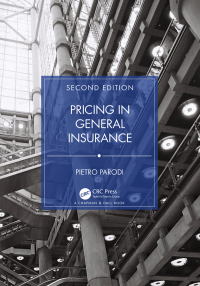A large industrial company X wants to insure its properties against the risk of earthquakes, because many
Question:
A large industrial company X wants to insure its properties against the risk of earthquakes, because many of its plants are in earthquake-prone regions.
a. Explain why a simple burning cost analysis or a frequency/severity analysis over the last 10 years of experience may very well not provide a good indication of the cost of insurance.
b. Explain how a catastrophe model allows one to overcome the difficulties in (a).
c. State what the components of a catastrophe model for earthquakes are, and briefly describe each of them.
d. A simple example of an event loss table is given in Figure 25.4 and is repeated here:
Event ID Rate Expected loss Correlated standard deviation
(SDC)
Independent standard deviation
(SDI)
Overall standard deviation Exposure 1 0.015 2,300,000 322,000 1,288,000 1,610,000 11,500,000 2 0.008 4,000,000 560,000 2,240,000 2,800,000 28,000,000 3 0.010 5,500,000 880,000 3,520,000 4,400,000 27,500,000 4 0.025 7,200,000 864,000 3,456,000 4,320,000 43,200,000 Briefly describe the meaning of each column.
Calculate the overall yearly rate of catastrophes for the simple example set out in Question (d), and briefly explain how you would simulate losses based on that table. Briefly explain the difficulty of building a catastrophe model for terrorist attacks relative to a natural catastrophe model.
Step by Step Answer:






